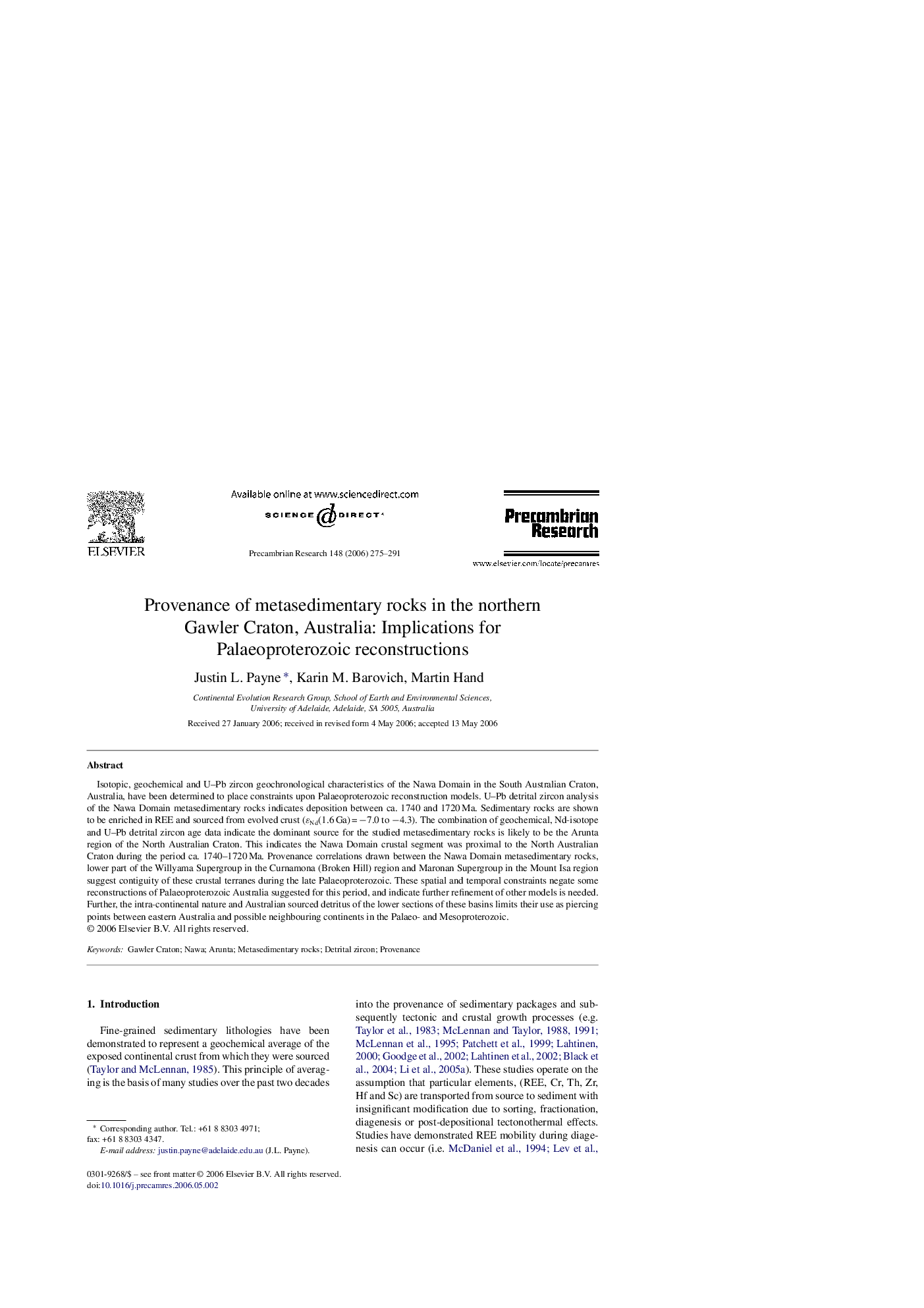| Article ID | Journal | Published Year | Pages | File Type |
|---|---|---|---|---|
| 4724705 | Precambrian Research | 2006 | 17 Pages |
Isotopic, geochemical and U–Pb zircon geochronological characteristics of the Nawa Domain in the South Australian Craton, Australia, have been determined to place constraints upon Palaeoproterozoic reconstruction models. U–Pb detrital zircon analysis of the Nawa Domain metasedimentary rocks indicates deposition between ca. 1740 and 1720 Ma. Sedimentary rocks are shown to be enriched in REE and sourced from evolved crust (ɛNd(1.6 Ga) = −7.0 to −4.3). The combination of geochemical, Nd-isotope and U–Pb detrital zircon age data indicate the dominant source for the studied metasedimentary rocks is likely to be the Arunta region of the North Australian Craton. This indicates the Nawa Domain crustal segment was proximal to the North Australian Craton during the period ca. 1740–1720 Ma. Provenance correlations drawn between the Nawa Domain metasedimentary rocks, lower part of the Willyama Supergroup in the Curnamona (Broken Hill) region and Maronan Supergroup in the Mount Isa region suggest contiguity of these crustal terranes during the late Palaeoproterozoic. These spatial and temporal constraints negate some reconstructions of Palaeoproterozoic Australia suggested for this period, and indicate further refinement of other models is needed. Further, the intra-continental nature and Australian sourced detritus of the lower sections of these basins limits their use as piercing points between eastern Australia and possible neighbouring continents in the Palaeo- and Mesoproterozoic.
